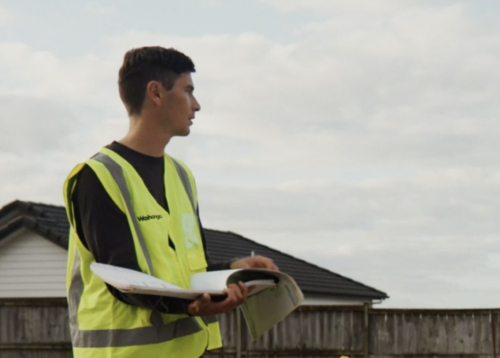A Quick Guide To Social Media For Cafes And Restaurants
Social media is like the online version of the local coffee shop – it’s where people come to hang out, spend time, and catch up on what’s been going on. There’s never been a better or more influential time to have a social media presence for your café or restaurant. On social media, you can promote your wares, communicate with customers, and attract new business.
This guide is all about leveraging social media to keep your café front of mind in your neighbourhood. And if you’re more of a ‘destination dining’ kind of operation, where people have to go out of their way to eat at your place, social media could make all the difference between a half-empty dining area and a fully-packed one.
Why is social media so important for a hospitality business?
Fifteen years ago, before the world became addicted to social media, cafes and restaurants used more traditional forms of marketing – like newspaper, radio and flyer drops in letterboxes. Plus there was the all-important word-of-mouth from happy customers.
Things are different now, because digital information sources are ruling the show. Customers have the potential to come into contact with your business when they check their Facebook feed, pop into Instagram and take a look around sites like TradeMe, where they can see digital display advertising. They also search on Google for good places to eat and drink, which means sites like Zomato and Trip Advisor come into the mix. Word of mouth is still hugely important, but it tends to travel through digital channels – like Messenger and Whatsapp, where senders can include a link to your website or Facebook page.
Employ a social media expert or appoint one within your own business
It’s likely the obstacle between your business and effective, ongoing social media activity is lack of time. While social media is potentially a low-cost way to promote your business, it does involve the investment of a few hours every week. To make sure this actually happens, you can either delegate social media to someone in your team (preferably a digital native who understands how it all works) or you can outsource to a social media company. Either is fine, as long as it gets the job done. If resources are limited, it may be better to do a cracking job of one channel than spreading yourself too thin over several.
The 10 things you should think about for successful social media activity
1. Build your following
You can be super-active on Facebook, Instagram and Twitter, but it won’t get you anywhere if you don’t have a lot of followers. So the first thing you have to do is build your following. You can do this by encouraging all your regulars to follow you on the various platforms, however unless they love you very much, you’ll need to offer some sort of incentive. Consider a promotion like ‘follow us on Facebook and win free coffee for a month’ or ‘follow us on Instagram and your next coffee’s on us’. When you offer a prize, ensure it’s relevant to your café – either something you make (food or drink) or something that’s connected to things you make (re-usable coffee cups, branded tea towel or tee shirt).
For people who might become customers, you can try a more public-facing campaign with paid posts that reach out to new people. This kind of activity needs to be engaging, so consider asking questions or running a competition. Here are just a few ideas:
- A poll about ‘what’s your favourite kind of coffee’ will gain attention for your espresso.
- A competition where people vote for their favourite muffin or sandwich.
- Give away one of your most popular recipes in a post, naming it the ‘Frittata of the Year’ or ‘Ultimate Bliss Ball’.
- Ask the public for menu advice – should you drop pies for banh mi?
- Post funny quotes about coffee or cake, then ask for favourite quotes in return.
- Ask for the best picture of coffee art created at your café. This idea will challenge your employees as well as engage your customers.
There are endless ways to use social media platforms to raise your profile and gather followers. Google around if you need more inspiration.
2. Respond to comments
Social media is a two-way street. If you don’t follow through by responding to or liking people’s comments, you won’t build the relationships that will turn into bums-on-seats at your café or restaurant.
Keeping an eye on comments and likes also lets you see what type of activity is working best. Keep a record of what posts get the most response, then use it to come up with other ideas for posts and promotions. Reading comments is also a way to come up with new ways to make your business better - you might think you know your customers inside out, but their ideas and suggestions are often a revelation.
3. Use customer stories
If you’ve ever booked accommodation on Booking.com or Airbnb, you’ll know the power of good reviews and customer stories. It’s not enough to believe the business pitch anymore; everyone wants reassurance that the promises are actually delivered.
You can leverage the story-telling power of your loyal customers by encouraging them to write reviews on Google, Trip Advisor, Facebook or even in a micro-fashion on Twitter. Instagram and Pinterest are also places for customer stories – a customer snaps a picture of a sumptuous breakfast, then shares it to their followers or pins it to a board.
You can also gather customer experience stories with a competition. Like ‘Tell us what’s your favourite thing on our menu (and why you like it) to win free breakfast for two’. Every entry becomes a way for you to gather stories and understand your customers better.
4. Support your social media activity in-store
Social media promotions, competitions and surveys will work even harder if you use in-store posters and table-talkers to spruik your activity to real-life customers. Think about it. They’re sitting at a table sipping a coffee, eating food and fiddling with their phone! A simple tent card on the table is all it takes to direct a bored customer to your Facebook page, Instagram feed or website. Another surprising in-store communication channel is the toilet wall – a great place for a poster!
5. Don’t be annoying or repetitive
While social media activity can be a highly effective way to keep customers loyal and attract new customers, it could also cost you customers if you get too repetitive or irritating. Put yourself in your audience’s shoes – what’s a tolerable amount of contact and how much is too much?
Being annoying is a clear and present danger for social media; more than for any other form of advertising or promotion. So before you hit the ‘post’ button, make sure there’s something in it for your audience. Can they learn something, contribute something or win something? Vacuous posts that lack the WIIFM (what’s in it for me) factor won’t do much for your business.
Hopefully you’ll soon build up a picture of which types of activity are most liked. Use your social media track record to shape the posts of the future.
6. Giving information can be just as good as offering prizes
Let’s say you’ve developed a fantastic recipe for an oven-grilled cheese and mushroom omelette that’s really heavy on the mushrooms. How can you use your culinary masterpiece to draw customers into your café? Before you decide to give omelettes away, consider a post about the nutritional benefits of mushrooms or a video about how to make a smashing omelette? Customers will appreciate you taking the time to teach them something they didn’t know.
7. Use cloud apps to make life easier
There are cloud apps out there that make it easier to plan and implement social media activity. Hootsuite, for example, lets you schedule and publish content to Instagram, while also managing your Facebook, YouTube, Twitter, LinkedIn. You can have a free trial to get the hang of it, then pay a monthly subscription. This approach can be a smart idea if you’re delegating social media activity to a member of your team…or yourself.
Wishpond is an app that provides social media marketing tools, including a tool that runs competitions, to help you create and run promotions on Facebook, Twitter and websites. Whether you’re a corner café or a haute cuisine restaurant, this app can help you to squeeze extra value from your customer base.
8. Take a course in social media
If you’re really serious about taking care of social media in-house, look online for social media courses. By enrolling for a series of lessons, you can become an expert step by step. Social media is one of those things that you can learn organically, but it’s so much faster to learn from an expert.
9. Learn to take good pictures
Choosing the right words is obviously important for effective social media activity; it’s a form of advertising after all. But pictures are just as important. People consume with their eyes, so your food and drink posts need to be presented beautifully and photographed with skill. That doesn’t mean you have to rush out and buy the latest digital SLR. It just means you need to think about composition, lighting and colour when you’re taking pics with your phone. Filters can be helpful, however taking a crash course on food photography is not a bad idea. The interweb is full of helpful blogs and online lessons to help you produce pictures that are good enough to eat.
10. Seize the season or celebration
There’s always a seasonal or celebratory excuse to execute a cunning social media campaign. The obvious contenders are Christmas and Easter, but there are many others to harness. For example: a spring campaign to launch some new menu items; an Anzac promotion involving a free Anzac biscuit with every coffee; a Halloween contest where customers can vote on the best Halloween coffee art…the list goes on.
If you’re running short of ideas, remember to draw on your team’s creativity. You can be fairly certain they use social media channels themselves every day, so they’ll appreciate being involved with social media activity. Get them thinking like marketers and make it easy for anyone to submit an idea. Maybe a marketing suggestion box in the kitchen? You could even offer a prize for the social media post idea that scores the most likes.
11. Last but not least, get a proper website
While many cafés and restaurants are happy to use a Facebook page as their website, there’s a lot to be said for having a purpose-built site that provides a foundation for all your marketing activity. It doesn’t have to be super-large or fancy, but it should look and sound delicious. It also needs to strongly connect to your brand – logo, imagery and colours.
There are heaps of gorgeous WordPress templates that have been designed with eateries and bars in mind. And if you really want to rev things up, add a blog page that lets you promote your impressive huge food and drink knowledge. If your audience includes business people, a LinkedIn post can send them straight to a blog post on your website about ‘how coffee improves productivity’ or ‘why eating lunch at your desk is bad for your health’. Keep your customers engaged and entertained, and they’ll continue to come flocking.
Business Insurance for Cafes and Restaurants
Whatever business insurance you need State has you covered. If you’re in the hospitality industry, you should consider the following types of insurance:
- Business Assets Insurance: Our Material Damage and Mobile Assets policies cover the tools of your business, the stock on your shelves and the building you own or do business in.
- Business Interruption Insurance: Covers your lost income if your business can't operate after a loss or damage that's covered by your material damage policy.
- Business Liability Insurance: We’ve got you covered if you’re held legally liable for accidental damage to someone else’s property and/or injury to another person that’s caused in the course of your normal business activities.
- Business Vehicle Insurance: Protect the vehicles that keep your business moving. We also cover your legal liability if you accidentally cause damage to someone else's property and/or injure someone while using your business vehicle.
- Machinery Breakdown Insurance: Minimise down time and get your business going as soon as possible with Machinery breakdown insurance.
You might also like...
-
 March 2023Business Blog | State Insurance
March 2023Business Blog | State InsuranceThe pitfalls and dangers of running a business
-
 March 2023Business Blog | State Insurance
March 2023Business Blog | State InsuranceHow to grow a business and take risks
-
 October 2022Business Blog | State Insurance
October 2022Business Blog | State InsuranceSmall Biz Support
